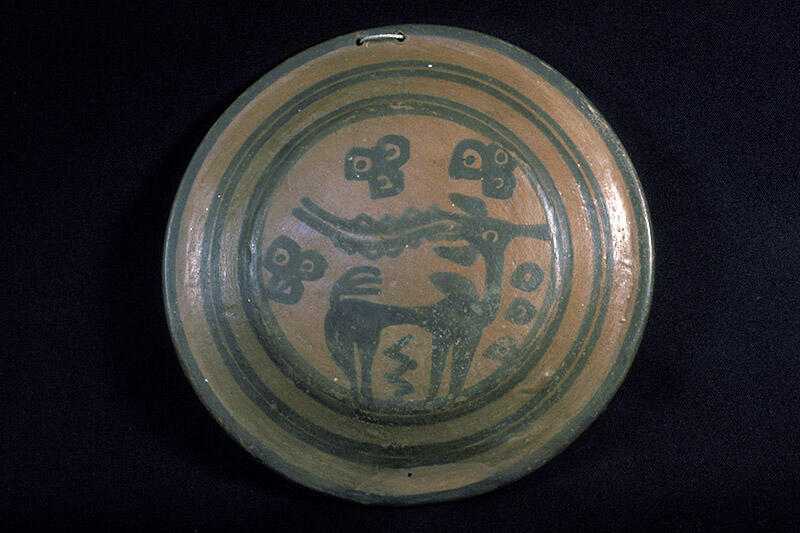Late Harappan Period dish or lid with perforation at edge for hanging or attaching to large jar. It shows a Blackbuck antelope with trefoil design made of combined circle-and-dot motifs, possibly representing stars. It is associated with burial pottery of the Cemetery H period, dating after 1900 BCE.
The Late Harappan Period at Harappa is represented by the Cemetery H culture (1900-1300 BCE) which is named after the discovery of a large cemetery filled with painted burial urns and some extended inhumations. The earlier burials in this cemetery were laid out much like Harappan coffin burials, but in the later burials, adults were cremated and the bones placed in large urns (74). The change in burial customs represents a major shift in religion and can also be correlated to important changes in economic and political organization. Cemetery H pottery and related ceramics have been found throughout northern Pakistan, even as far north as Swat, where they mix with distinctive local traditions. In the east, numerous sites in the Ganga-Yamuna Doab provide evidence for the gradual expansion of settlements into this heavily forested region. One impetus for this expansion may have been the increasing use of rice and other summer (kharif) crops that could be grown using monsoon stimulated rains. Until late in the Harappan Period (after 2200 BC) the agricultural foundation of the Harappan cities was largely winter (rabi) crops that included wheat and barley.
Although the Cemetery H culture encompassed a relatively large area, the trade connections with the western highlands began to break down as did the trade with the coast. Lapis lazuli and turquoise beads are rarely found in the settlements, and marine shell for ornaments and ritual objects gradually disappeared. On the other hand the technology of faience manufacture becomes more refined, possibly in order to compensate for the lack of raw materials such as shell, faience and possibly even carnelian.

